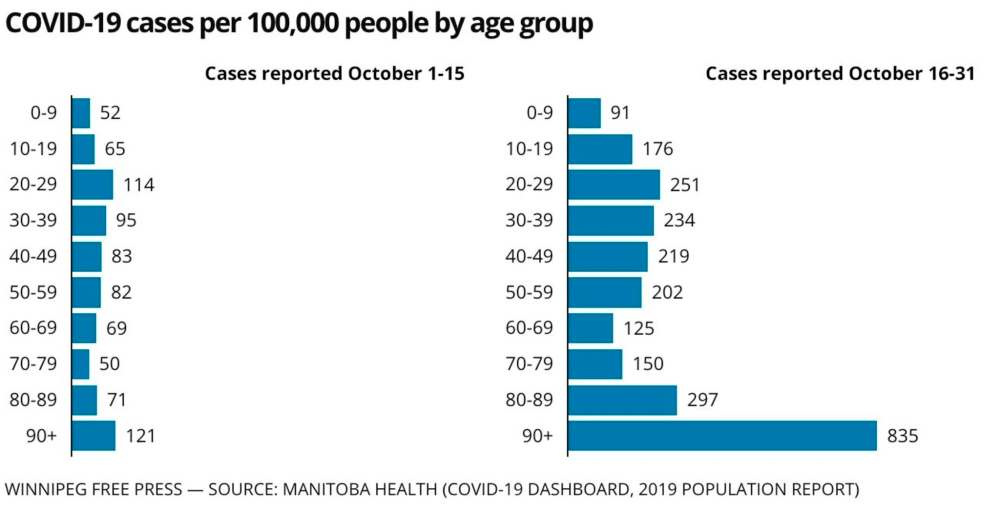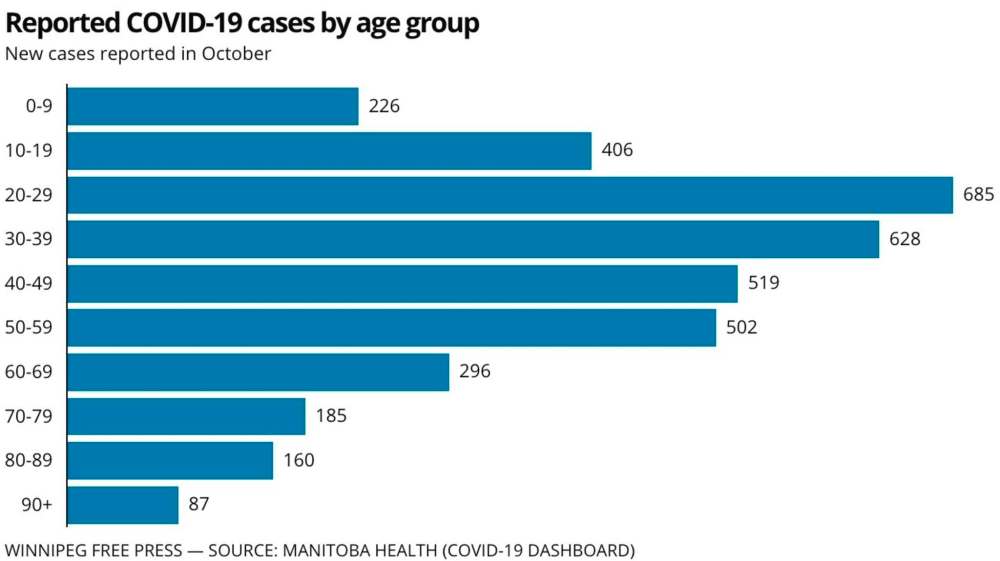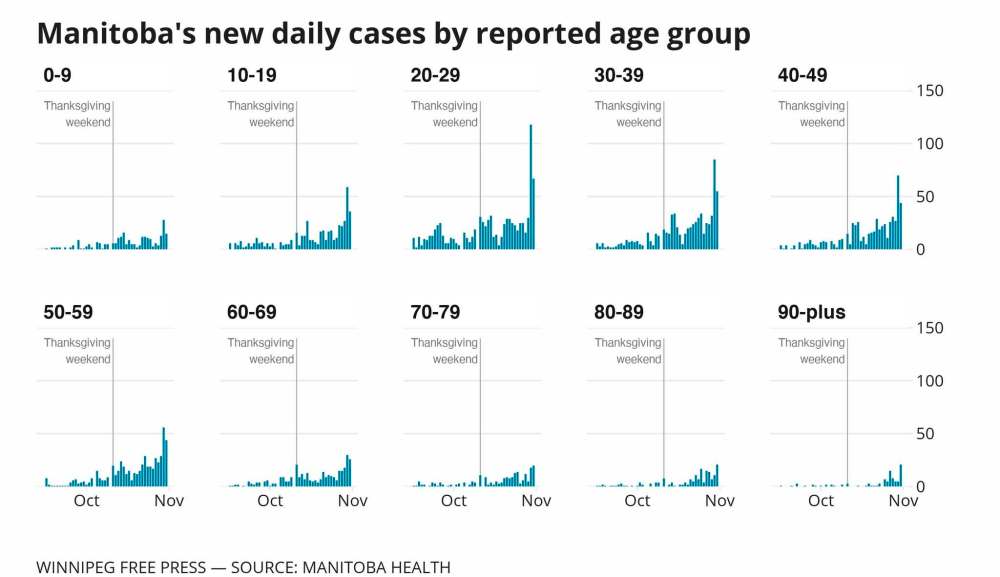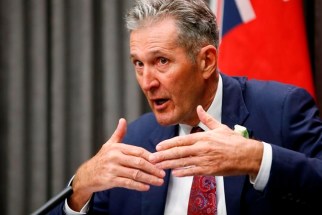Ads target youth as virus surges among elderly
Read this article for free:
or
Already have an account? Log in here »
To continue reading, please subscribe:
Monthly Digital Subscription
$0 for the first 4 weeks*
- Enjoy unlimited reading on winnipegfreepress.com
- Read the E-Edition, our digital replica newspaper
- Access News Break, our award-winning app
- Play interactive puzzles
*No charge for 4 weeks then price increases to the regular rate of $19.00 plus GST every four weeks. Offer available to new and qualified returning subscribers only. Cancel any time.
Monthly Digital Subscription
$4.75/week*
- Enjoy unlimited reading on winnipegfreepress.com
- Read the E-Edition, our digital replica newspaper
- Access News Break, our award-winning app
- Play interactive puzzles
*Billed as $19 plus GST every four weeks. Cancel any time.
To continue reading, please subscribe:
Add Free Press access to your Brandon Sun subscription for only an additional
$1 for the first 4 weeks*
*Your next subscription payment will increase by $1.00 and you will be charged $16.99 plus GST for four weeks. After four weeks, your payment will increase to $23.99 plus GST every four weeks.
Read unlimited articles for free today:
or
Already have an account? Log in here »
Hey there, time traveller!
This article was published 05/11/2020 (1858 days ago), so information in it may no longer be current.
As the provincial government launches an ad campaign to try to get young people to be more cautious and follow public health restrictions, data show COVID-19 is spreading at disproportionately high rates among the elderly.
New case counts are still higher among Manitobans under age 30, but not by the outsized rates the province has stressed.
At 368 cases per 100,000 people, the rate for new cases of COVID-19 reported in October is highest among Manitobans over 80. And particularly in the latter half of October, after a Thanksgiving spike, the rate at which 20- to 29-year-olds contracted the virus wasn’t significantly higher than those in their 30s, 40s or 50s.
On Thursday, Premier Brian Pallister unveiled two video ads targeted to young people that the Manitoba government will pay to place on social media platforms such as Instagram and TikTok.
Both ads feature young people hanging out with friends, wearing masks improperly and recovering quickly from COVID-19, only to realize “some people don’t recover,” recognizing the toll the virus takes on older people.
Pallister acknowledged the ads are aimed at young people, but said he doesn’t want to stigmatize that age group.
“I think that’s a fair observation, but I wouldn’t want to be stigmatizing all young people. I got two kids under 30 who are pretty responsible, and I think there’s a lot of young people that really are, but nonetheless, you go where the problem is. And the problem isn’t exclusively there, but it is there and we gotta be honest about it,” Pallister said.
Before releasing the ads, the government’s communications branch paid to hold focus groups with high school students and adults aged 18 to 24 who either had jobs working with the public or went out a few times a week for non-essential trips during the summer.
One of the focus groups’ findings was that youth were more likely to follow mandatory government rules rather than suggestions.
A recent Probe Research poll found Manitobans aged 18 to 34 were the least likely, compared with other age groups, to say they carefully follow public health recommendations all the time. Half said they do, compared with 68 per cent of 35- to 54-year-olds and 74 per cent of Manitobans 55 and older.
But the youngest age group also responded in support of full lockdown restrictions and was the most likely to say the pandemic has added major stress to their lives.
Pallister’s government has been criticized for blaming young people despite the largest and deadliest outbreaks being in hospitals and personal care homes. In addition, the government’s own economic recovery plan resulted in young people, who work in retail and other public-facing jobs, getting back to work after the spring lockdown.
NDP Leader Wab Kinew, who’s 38, said he likes the ads but questioned whether they’ll be effective in reaching people who don’t already follow public health guidelines.
“I also think it’s doing a bit of a disservice at this point to try and just blame people in their 20s. This pandemic is out of control, and we’re seeing way too many cases at all age groups.”
Manitoba Liberal Leader Dougald Lamont said the government’s focus on young people is “a huge mistake.”
“The premier has been pushing this idea that someone else is to blame, that young people not paying attention or people breaking the rules are the problem, when it’s the fact that he and his government haven’t done what they need to do to make Manitoba safe,” Lamont said.
Pallister has repeatedly said Manitoba’s surge in COVID-19 cases is due, in part, to people having “unprotected” social gatherings at night. Earlier this week, he again pushed back at the suggestion that the spike in COVID-19 cases could have been reduced if businesses were ordered to shut down and heavier restrictions were implemented earlier.
“Some people are making the assumption that by having Manitobans back to work, that somehow that causes COVID.
“Don’t make that link; that isn’t fair. It’s not fair to the small businesses or the people who work in them,” Pallister said on Tuesday. “There isn’t data to support that thesis.”
— with files from Carol Sanders
michael.pereira.freepress.mb.ca
katie.may@freepress.mb.ca
Report on focus group research with youth on COVID-19

Katie May is a general-assignment reporter for the Free Press.
Our newsroom depends on a growing audience of readers to power our journalism. If you are not a paid reader, please consider becoming a subscriber.
Our newsroom depends on its audience of readers to power our journalism. Thank you for your support.
History
Updated on Thursday, November 5, 2020 7:13 PM CST: add thumbnail
Updated on Thursday, November 5, 2020 7:46 PM CST: Adds hyperlink to Probe poll.











